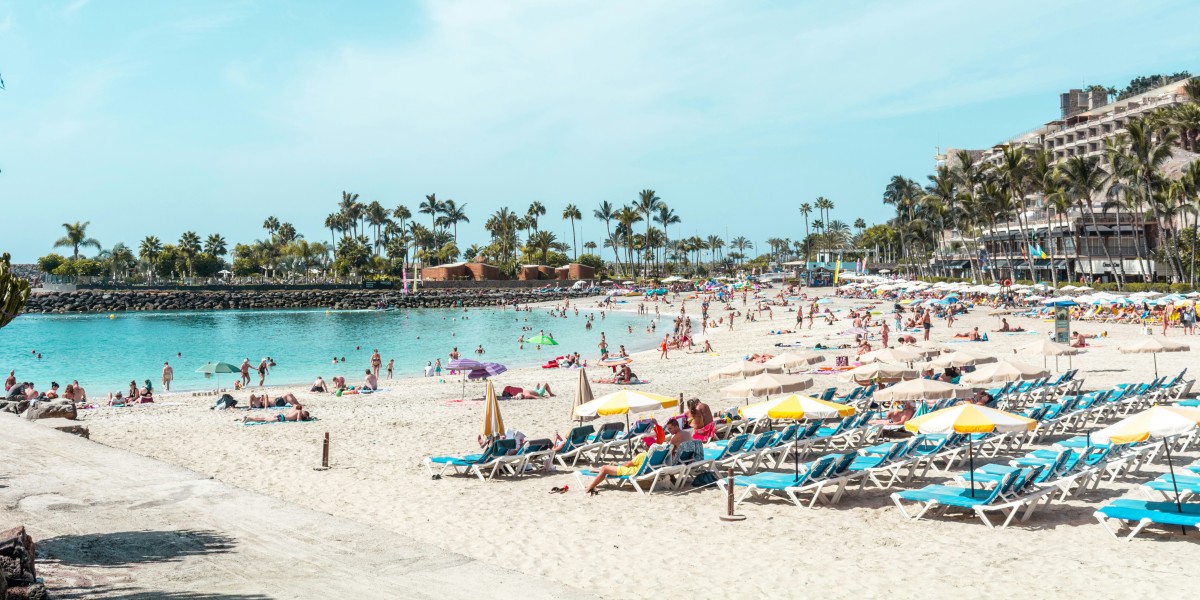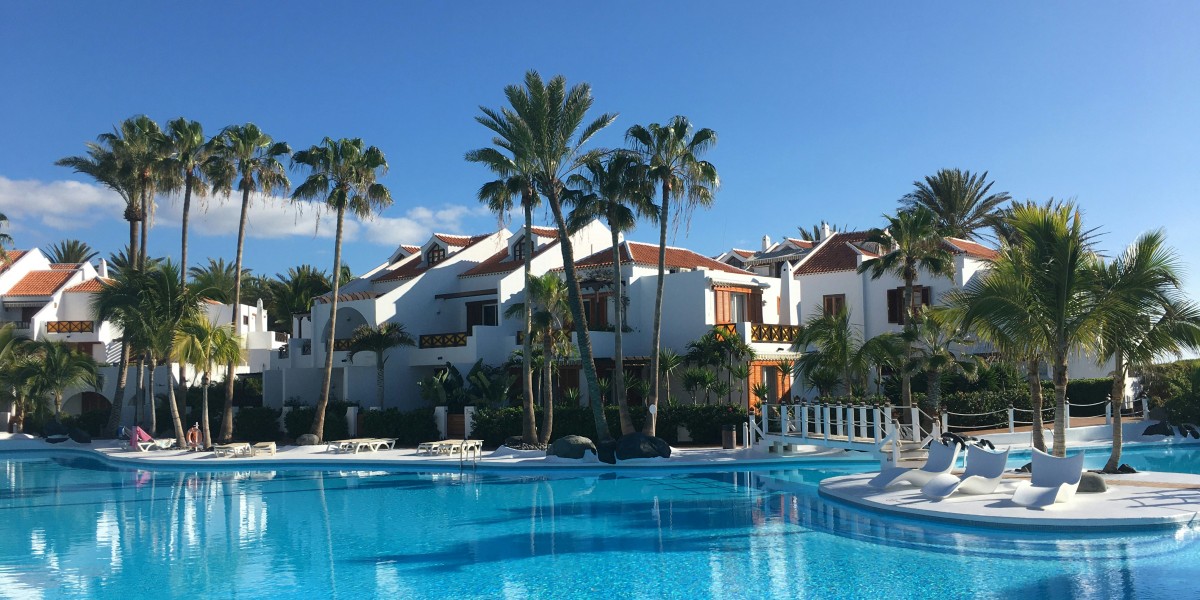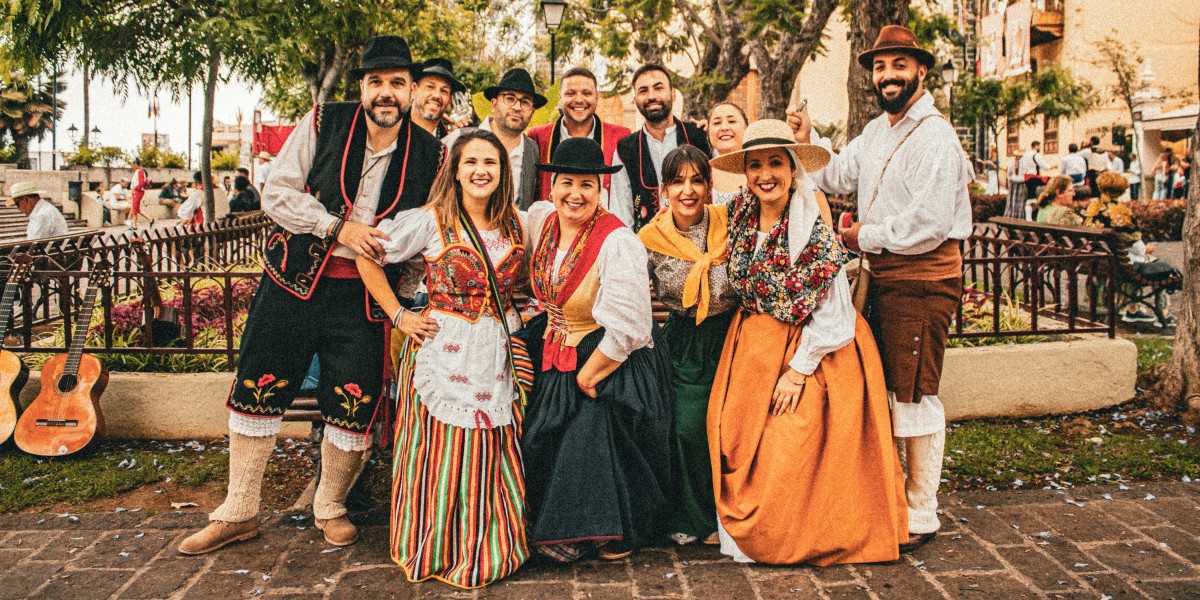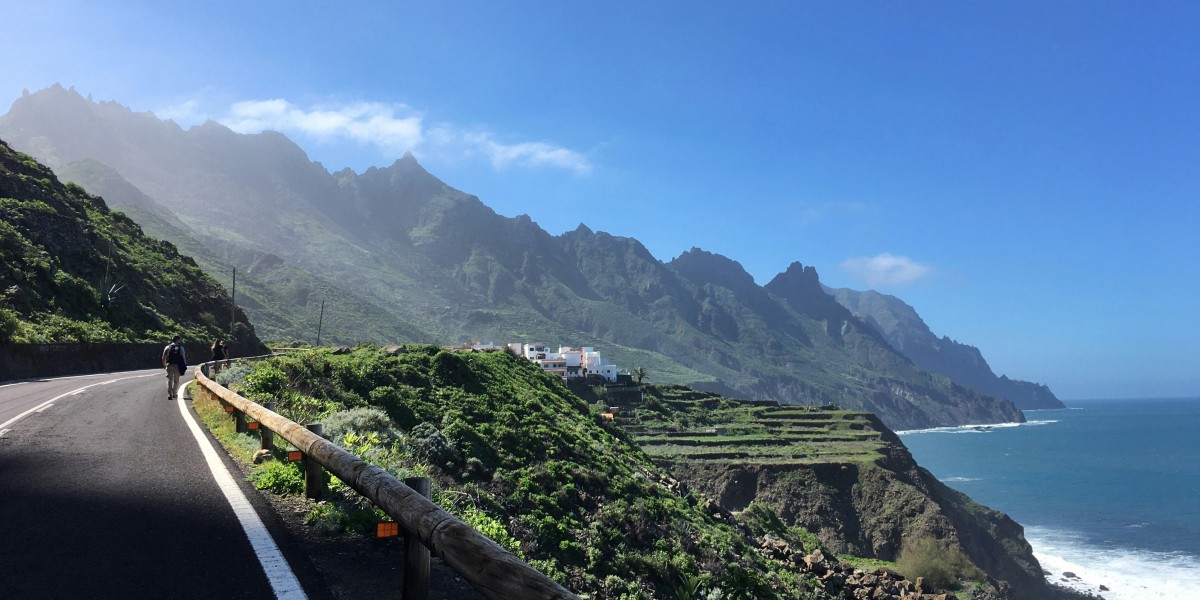
The Canary Islands are Spain’s warm, Atlantic backyard. Seven main islands with distinct moods, black- and golden-sand beaches, and a slower daily rhythm than the mainland. Life gravitates to the cities of Las Palmas de Gran Canaria and Santa Cruz de Tenerife, while coastal towns like Costa Adeje, Puerto del Carmen and Corralejo draw an international crowd. When living in the Canary Islands, expect Spanish as the day-to-day language, strong local traditions, and microclimates that switch from laurel forest to volcanic desert in the space of a drive.
- Is Canary Islands a good place to live?
- Living in Canary Islands: pros and cons
- Is it expensive to live on the Canary Islands?
- Canary Islands: real estate
- Best places to live in the Canary Islands
- Jobs, salaries and working life on the Canary Islands
- Schools and healthcare
- How to move to Canary Islands
- Retire to the Canary Islands (from the UK)
- Transport and getting around
- Culture, food and lifestyle
- Live like a local in the Canary Islands
Is Canary Islands a good place to live?
For many, the Canary Islands tick the big boxes: a mild climate all year, safe cities and towns, and easy access to beaches, hiking and water sports. Daily life gravitates towards Las Palmas de Gran Canaria and the Santa Cruz–La Laguna area, with sizeable international communities in the south of Tenerife and Gran Canaria, plus hubs in Lanzarote and Fuerteventura. Spanish is the day-to-day language, though English and German are widely understood in resort areas. The job market leans towards tourism and services, so remote workers, retirees, and outdoorsy families tend to settle most comfortably.
Getting around the archipelago is straightforward. There are multiple airports, frequent inter-island flights and ferries. Expect microclimates, regular trade winds and the occasional calima dust episode.
Living in Canary Islands: pros and cons

Life here has plenty going for it, with a few trade-offs you’ll want to keep in mind as an expat.
Some of the pros of life in the Canary Islands include:
- Year-round outdoor living: surfing at El Médano or El Confital, hiking in Teide, Anaga and Garajonay, and diving in La Restinga.
- Resident benefits and lower indirect tax: IGIC (VAT) at 7% (as opposed to 21% in mainland Spain) and travel discounts of about 75% on inter-island and mainland routes once registered.
- Strong food culture and laid-back rhythm: papas arrugadas with mojo, Majorero goat’s cheese, and wines from La Geria and Valle de La Orotava.
Some potential cons to consider:
- A narrower job market outside tourism, hospitality and retail, with most professional roles concentrated in Las Palmas and Santa Cruz–La Laguna.
- Housing pressure in winter in the southern resort belts of Tenerife, Gran Canaria, Lanzarote and Fuerteventura, with fewer long-term rentals near the coast.
Is it expensive to live on the Canary Islands?
The cost of living in the Canary Islands is generally cheaper than Madrid or Barcelona, roughly in line with Valencia or Málaga in city areas, with resort zones in the south of Tenerife, Gran Canaria, Lanzarote and Fuerteventura trending higher in winter. To live comfortably in this part of Spain, a single person renting a modest one‑bed and keeping a sensible routine would usually budget in the region of €1,400–€1,800 per month.
According to Numbeo, day-to-day costs are straightforward, with a cheap main course at about €15 and a meal for two around €50. A beer (0.5 L) costs roughly €2.80, a cappuccino or coffee at €1.50, and a loaf of fresh white bread also €1.50. A monthly gym membership is typically €40, while basic utilities for an 85 m² flat average about €85 per month. For inter-island ferries, Tenerife–Gran Canaria usually comes in near €25 one way in the low season, and the Fuerteventura–Lanzarote hop is roughly €10–€16 one way.
As of September 2025, property prices in the Canary Islands averaged around €3,084 per m², 13.4% than a year before. For rentals, rent prices in the Canary Islands averaged €15 per m² in the same month, so an 80 m² flat would typically be about €1,200 per month.
Canary Islands: real estate

The market is split between lively resort belts with strong international demand and quieter inland or northern towns that offer better value. The priciest municipalities reflect resort appeal and seafront stock. In San Bartolomé de Tirajana¡, average asking prices sit around €4,719 per m². Mogán (home to Puerto de Mogán and Arguineguín) follows at roughly €4,224 per m². In Tenerife, Adeje in the south is about €4,466 per m², driven by demand around Costa Adeje.
Value pockets are inland and in greener northern zones. In Teror (Gran Canaria’s interior), the average property price is about €1,251 per m². Over in Tenerife, Arafo is near €1,401 per m² and Icod de los Vinos around €1,419 per m², with traditional housing stock and a slower pace than the southern resorts.
Renting patterns and seasonal pressure
Winter demand from snowbird retirees and mid-stay remote workers squeezes stock in southern Tenerife and Gran Canaria. Long-term contracts are more available in the main cities and northern towns. The cheapest place to rent right now is Icod de los Vinos at roughly €9.8 per m², while San Bartolomé de Tirajana is the most expensive at about €21.6 per m². Expect more choice and year-round pricing stability in main cities and northern towns. Resort zones skew towards short-term or seasonal contracts near beaches and golf courses.
Best places to live in the Canary Islands

Preferences differ across the best places to live in the Canary Islands. Tenerife is the all‑rounder with big‑island services and an easy balance of city life and wild landscapes, while Gran Canaria mixes proper city living with beach days and a mountainous interior. Lanzarote feels low‑rise and design‑minded, and Fuerteventura leans towards wind, wide beaches and watersports. La Palma is lush and steep for hiking and stargazing, La Gomera is compact and rugged with laurel forests, and El Hierro is the quietest and a favourite for diving.
There’s urban energy in Las Palmas de Gran Canaria and the Santa Cruz–La Laguna area.
The south coasts are sunny in Costa Adeje and Los Cristianos on Tenerife, plus Maspalomas and Meloneras on Gran Canaria. Breezier beach towns include Corralejo and Caleta de Fuste, while Puerto del Carmen on Lanzarote brings resort convenience.
Quieter, greener living is found around Puerto de la Cruz, Santa Cruz de La Palma, San Sebastián de La Gomera and Tenerife's top small towns and villages like Icod de los Vinos.
Jobs, salaries and working life on the Canary Islands
The archipelago’s economy focuses on tourism, hospitality and retail, with steady public‑sector roles and big logistics footprints around Puerto de la Luz in Las Palmas de Gran Canaria and the Santa Cruz de Tenerife port. You’ll also find aviation, construction and renewables suppliers, plus English‑speaking roles in customer support and shared‑service centres in the main cities.
Salaries are typically lower than in Madrid or Barcelona, so many newcomers either work remotely on mainland or international contracts or aim for city-based roles to balance pay and rent. The time zone suits UK and European teams, fibre coverage is strong in Las Palmas and Santa Cruz–La Laguna, and coworking spaces are easy to find. Winter brings more service jobs in the south of Tenerife and Gran Canaria, while year‑round contracts are more common in the cities.
Schools and healthcare
International schooling clusters where expat families live. In Gran Canaria, the American School of Las Palmas sits near the city’s northern suburbs, while Brains International School Telde offers Spanish/International programmes. In Tenerife, families look at the British School of Tenerife and Wingate School, alongside bilingual Spanish private options in Santa Cruz and La Laguna.
Public healthcare is delivered by the Servicio Canario de la Salud through health centres and major hospitals such as Hospital Universitario de Gran Canaria Doctor Negrín and Hospital Universitario Insular in Las Palmas. Surgical waiting lists have improved and are below the Spanish average, helped by referrals to private clinics to ease pressure.
How to move to Canary Islands

Moving works best if you treat it as two tracks. Your legal status (visa/residency) and your on‑the‑ground setup. The Spanish Non‑Lucrative Visa suits retirees or those with passive income. The Digital Nomad Visa covers remote workers and some contractors.
Paperwork sequence once you have the right to reside: get an NIE (foreigners’ tax number), secure a rental contract, register on the local padrón at your town hall, open a Spanish bank account, and book your TIE (foreigner’s ID card) appointment if you’re a non‑EU resident.
Swap your driving licence at the DGT if required, register for the resident travel discount to cut inter‑island and mainland fares, and keep utility contracts (electricity, water, internet) in your name for proof of address.
Retire to the Canary Islands (from the UK)
It's no surprise Spain has been ranked the third best country for retirement in 2025, thanks to its sunny weather and great quality of life. A gentle climate, walkable towns, and solid healthcare access make the islands one of the best places to retire in Spain. British communities are well established in the south of Tenerife, south Gran Canaria, Lanzarote and Fuerteventura.
However, before diving into retirement on a tropical island, it's important to consider the cost of retiring in Spain and which residency visas can work for you.
Transport and getting around

Getting between islands is easy by air or sea. Inter-island flights with Binter Canarias and Canaryfly run throughout the day, and residents get a hefty discount on fares. Ferries link the main corridors too: Fred. Olsen Express sails Agaete–Santa Cruz de Tenerife in about 1 hour 20 minutes several times daily, while Naviera Armas runs Las Palmas–Santa Cruz de Tenerife in around 1 hour 40 minutes, plus longer crossings to Lanzarote, Fuerteventura and La Palma.
On typical prices, foot-passenger tickets on Tenerife–Gran Canaria often come in near €25 one way in the low season, and the short Fuerteventura–Lanzarote hop is roughly €10–€16 one way. A 100% discount scheme for regular bus users has been in place since 2023 in the Canaries, so it’s worth checking the current conditions when you arrive.
Culture, food and lifestyle

The Canary Islands have a strong island identity shaped by Atlantic trade routes and their volcanic landscapes. Big calendar moments include Carnaval de Santa Cruz de Tenerife, the Fiesta de la Rama in Agaete, and La Palma’s five‑yearly Bajada de la Virgen. Music leans on folk with the timple (a small lute), and in La Gomera you’ll hear Silbo Gomero, the UNESCO‑recognised whistled language.
Days revolve around outdoor life. Surf and sailing on the coasts, hiking in Teide, Anaga, Garajonay and Caldera de Taburiente, and stargazing at Roque de los Muchachos and Teide’s high slopes.
Food is simple and local. Try papas arrugadas (salt‑crusted baby potatoes boiled until wrinkled) with mojo rojo (a garlicky red pepper sauce) or mojo verde (a coriander‑parsley version), gofio (toasted maize or wheat flour) stirred into soups or desserts, grilled vieja (parrotfish) or cherne (wreckfish), and lapas (limpets) seared on the plancha. Lanzarote’s La Geria and Tenerife’s Valle de La Orotava produce distinctive wines, and cafés pour barraquitos (layered coffee with condensed milk, cinnamon and lemon), plus, rum from Arehucas is a bar staple.
Live like a local in the Canary Islands
Settle into neighbourhood markets such as Mercado de Vegueta in Las Palmas and Mercado de Nuestra Señora de África in Santa Cruz for produce and cheeses. Keep an eye on the forecast for calima dust and trade winds, carry layers for altitude changes, and plan beach or mountain days around microclimates rather than island names.
Community is open and outdoorsy: hiking groups explore Tejeda and Anaga at weekends, surf clubs in El Médano and along Las Canteras welcome newcomers, and language exchanges in Triana and La Laguna are relaxed places to meet people. Learn a few Canarian turns of phrase (guagua for bus, chacho as an informal interjection), respect water use and trail etiquette, and use resident travel discounts for affordable island‑hopping once you’ve registered.

Stay in the know about living in Spain as a foreigner—get our weekly newsletter for the latest travel, legal, and lifestyle news.
For a taste of the high life, sign up for the monthly luxury market round-up.
